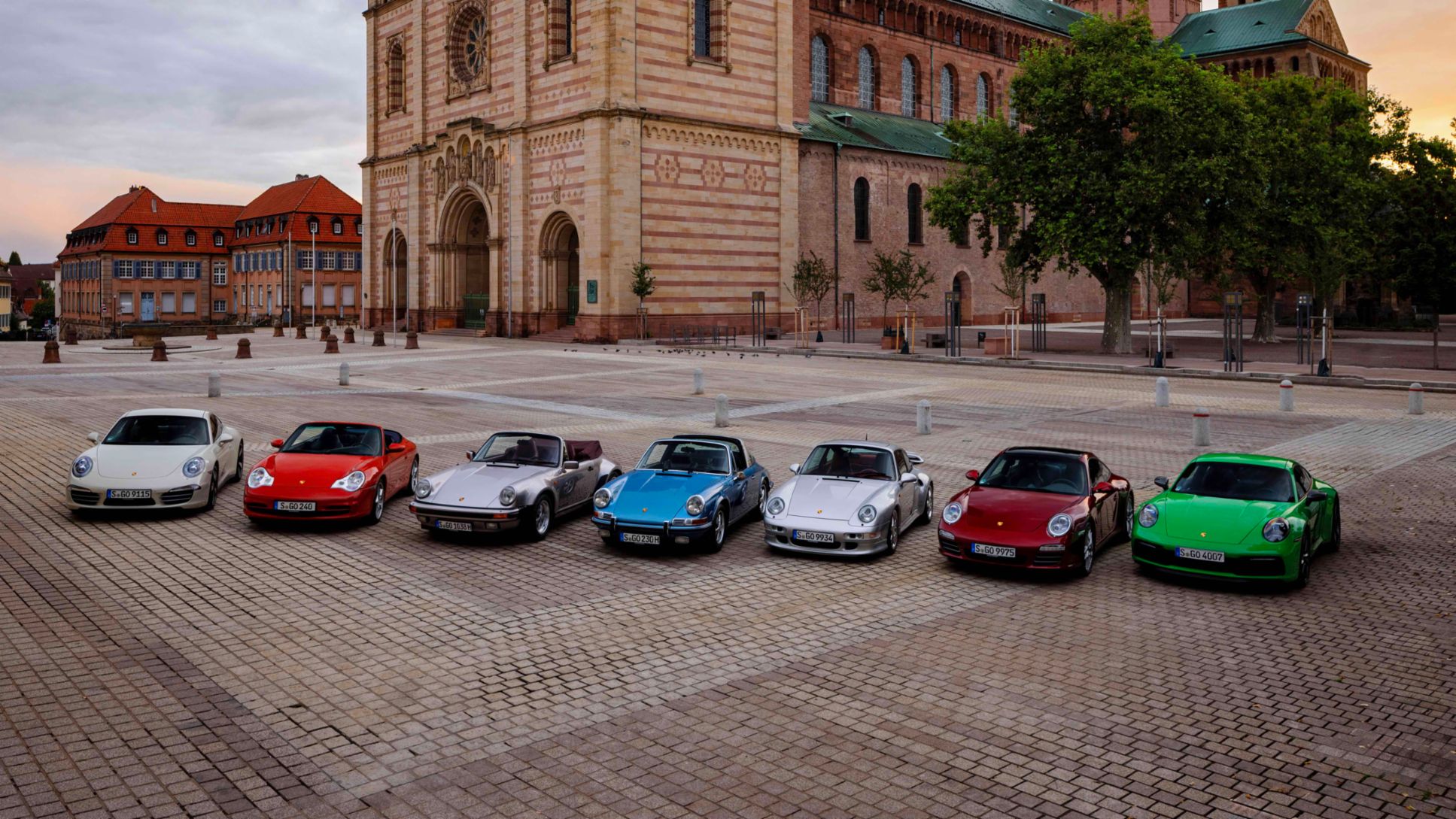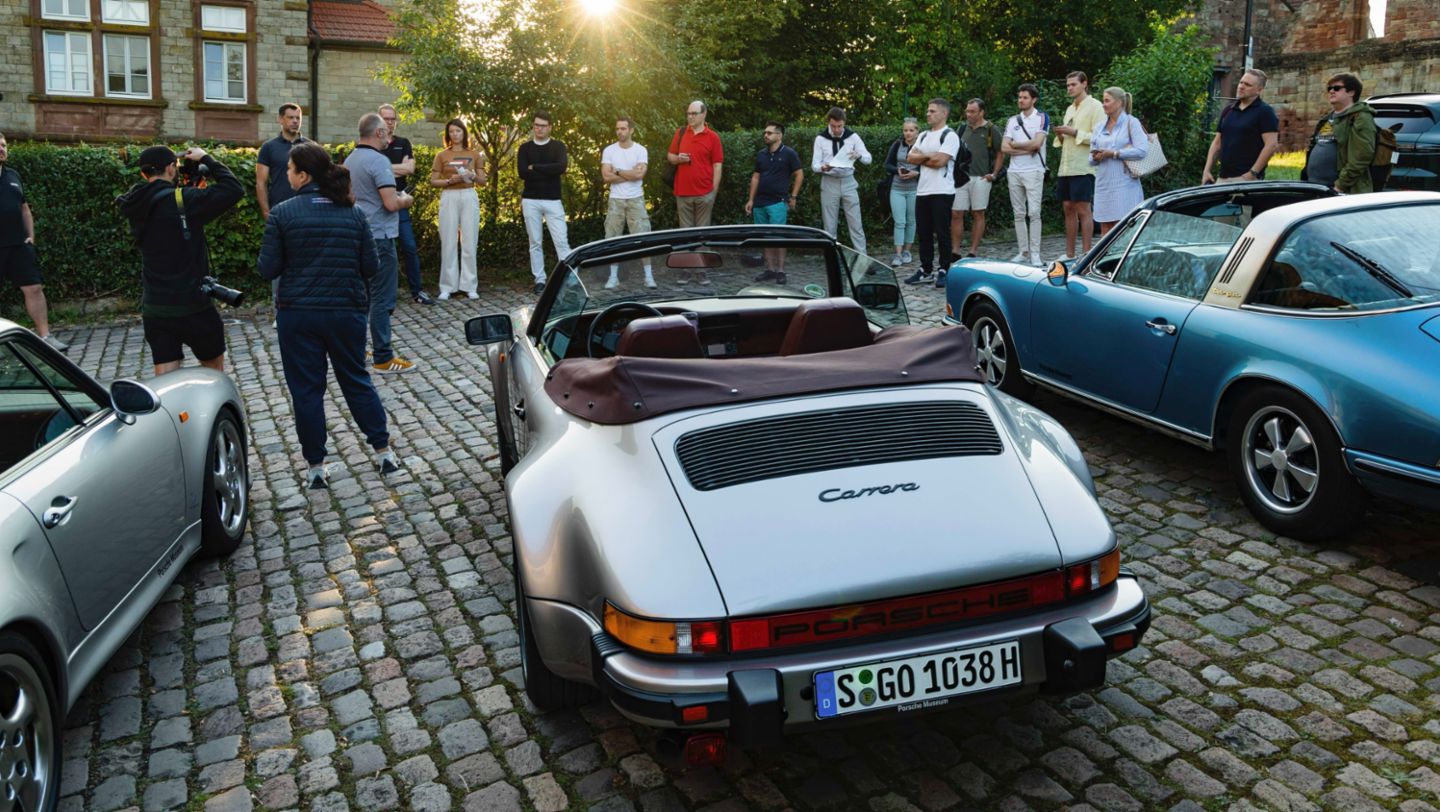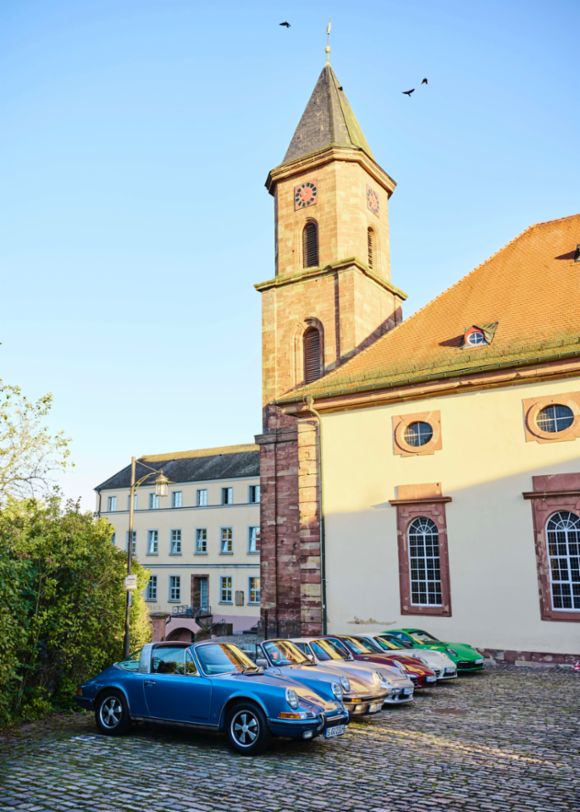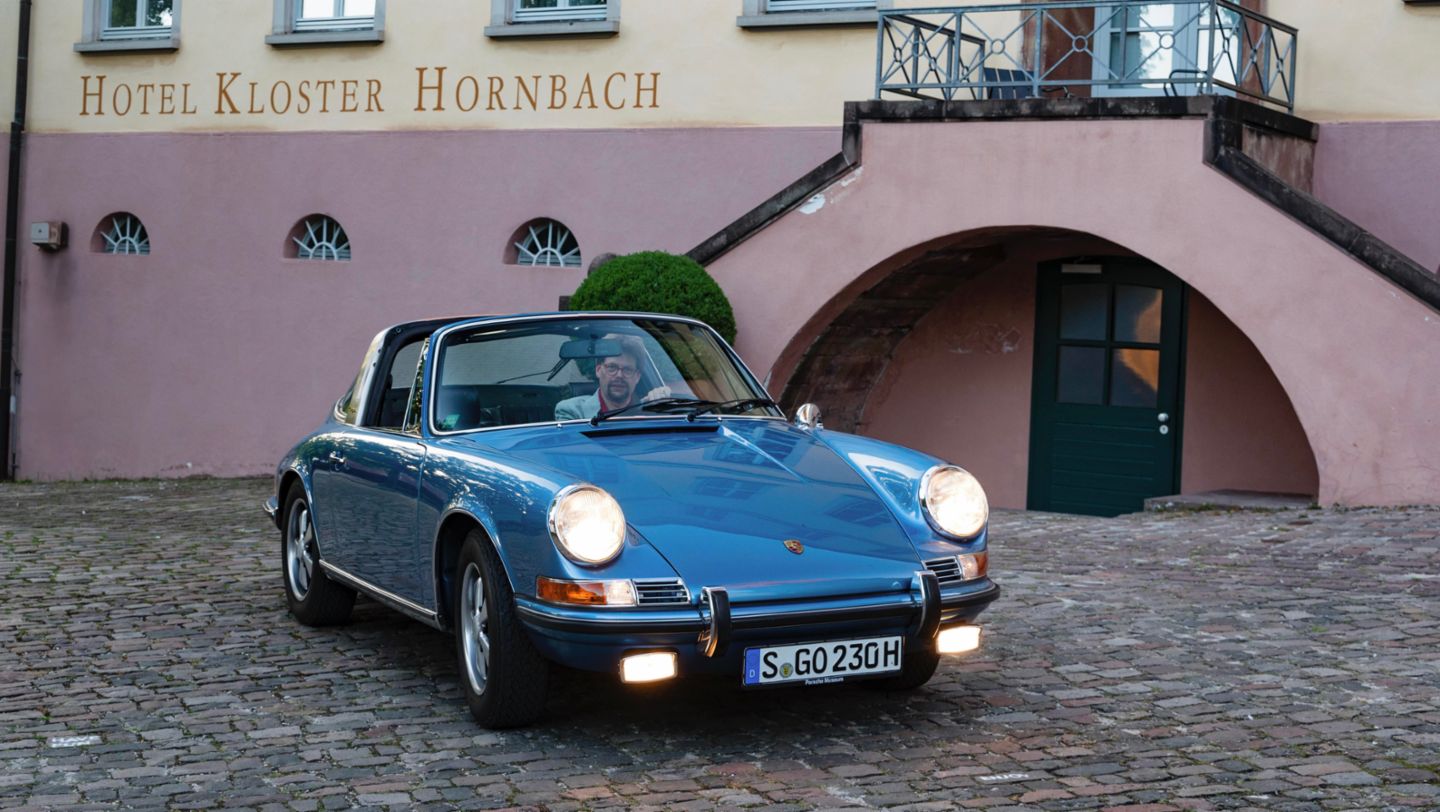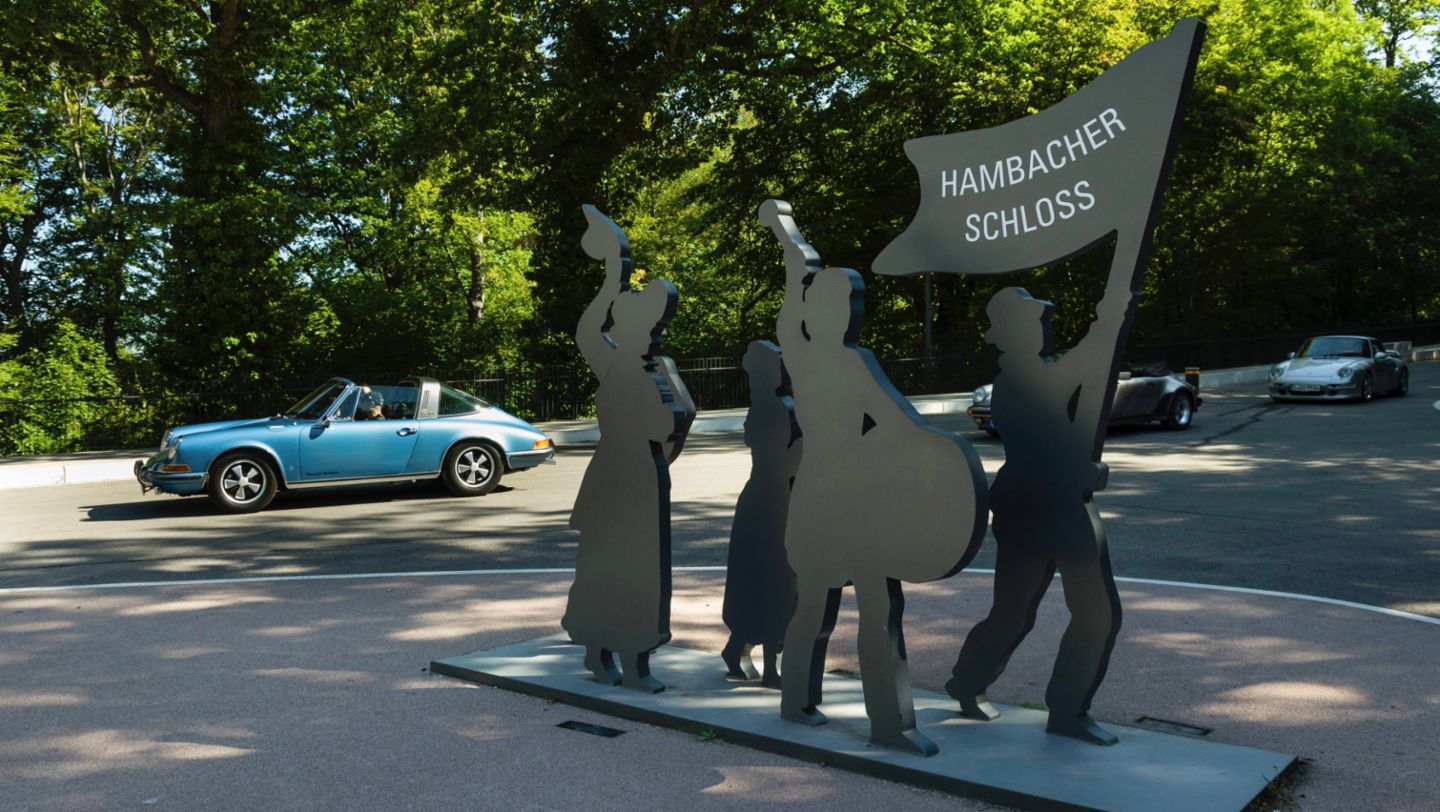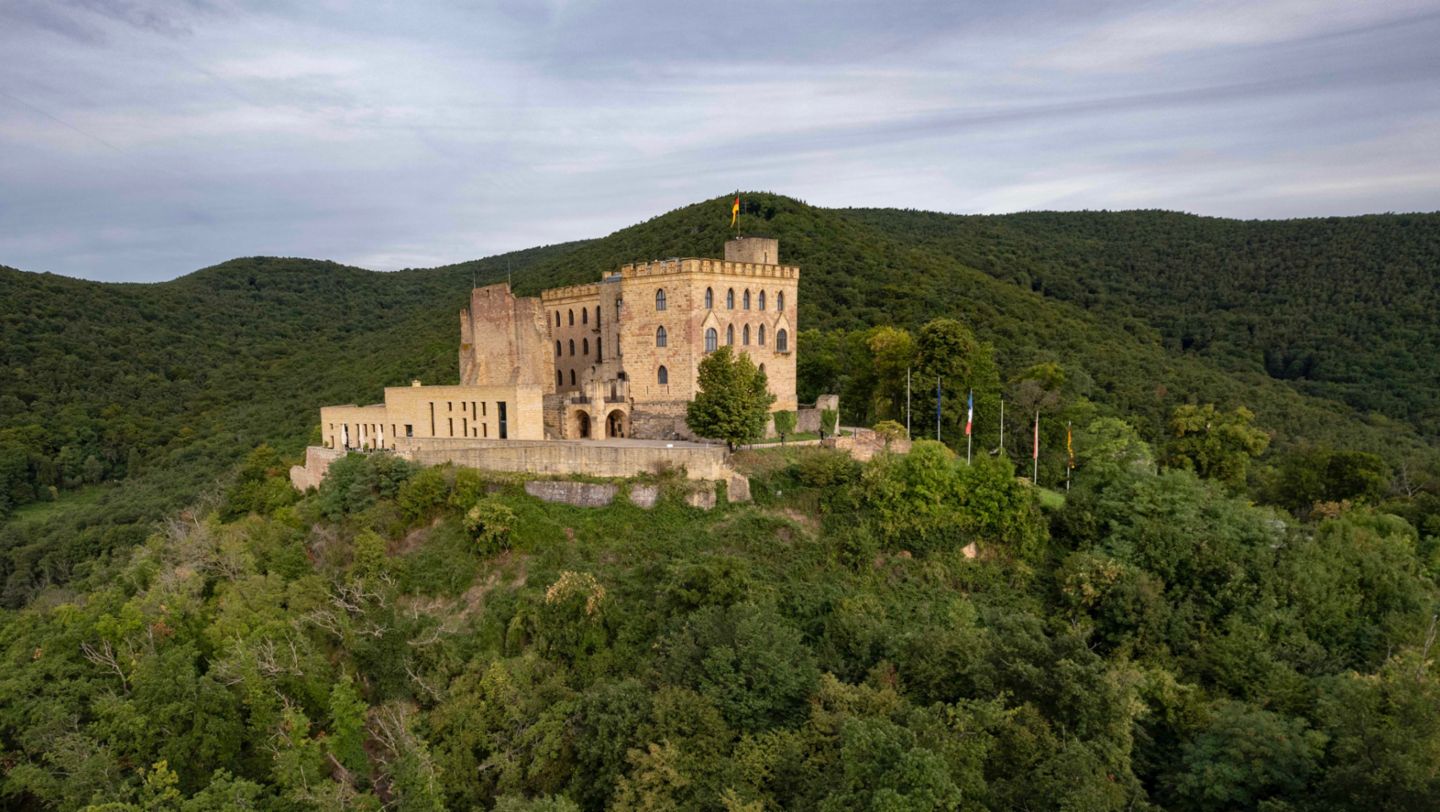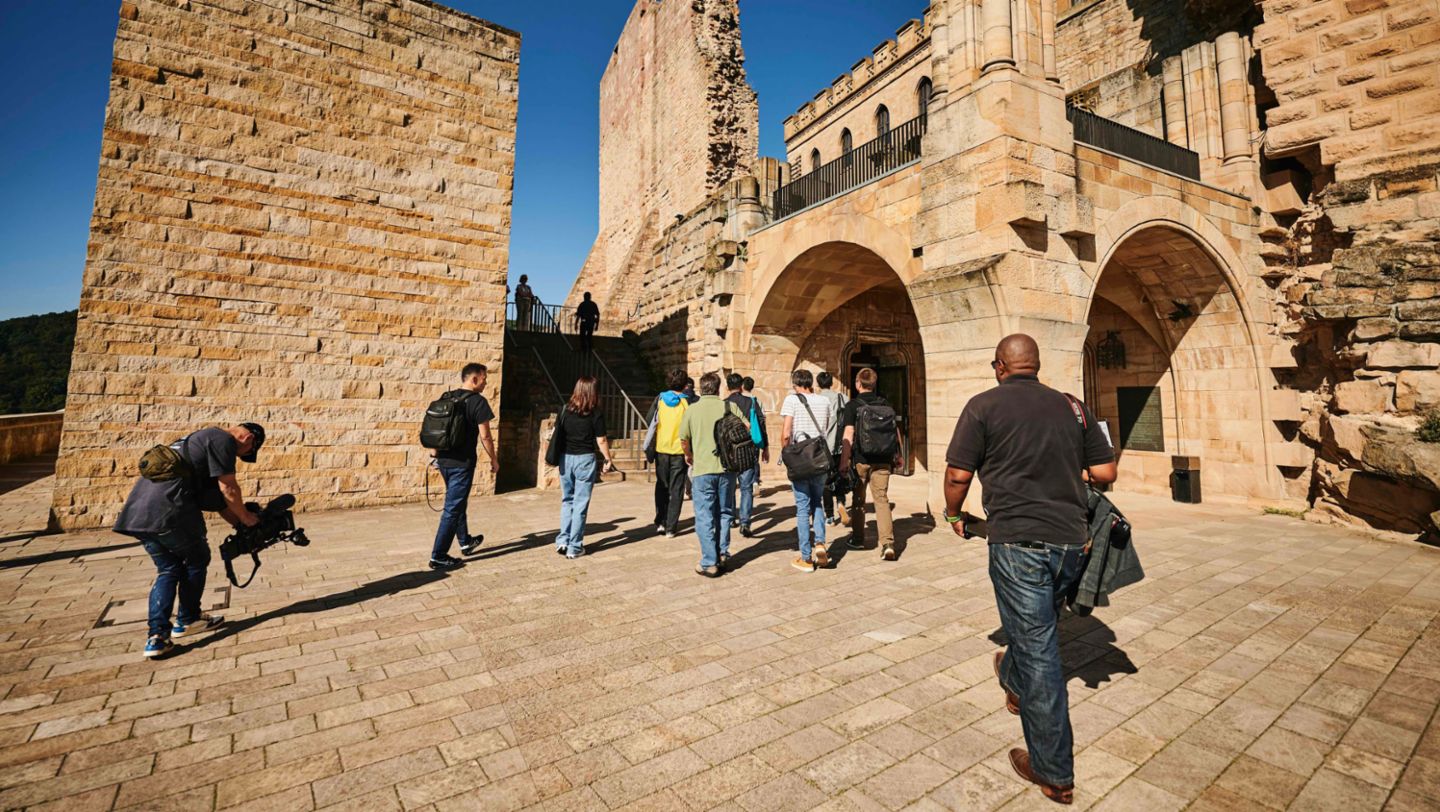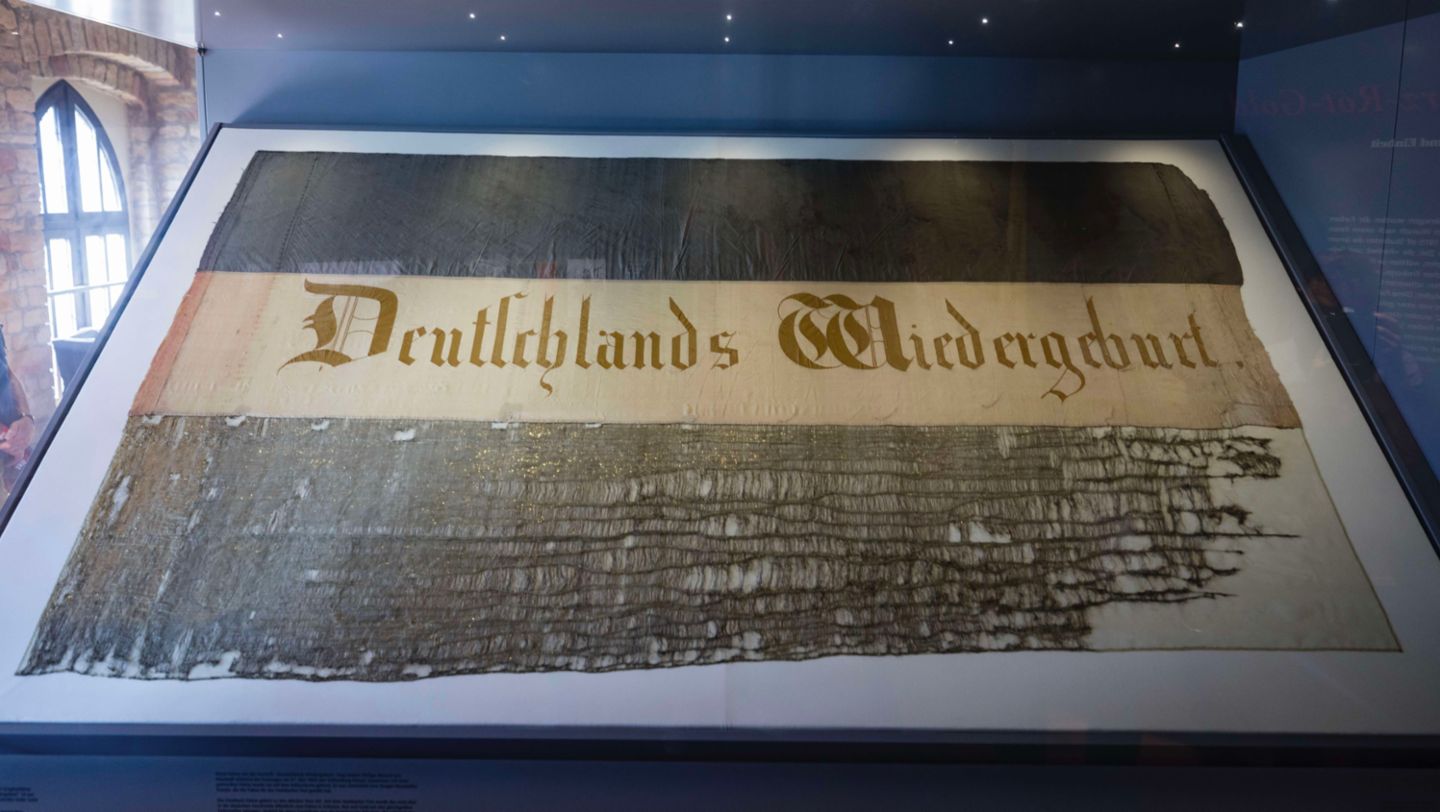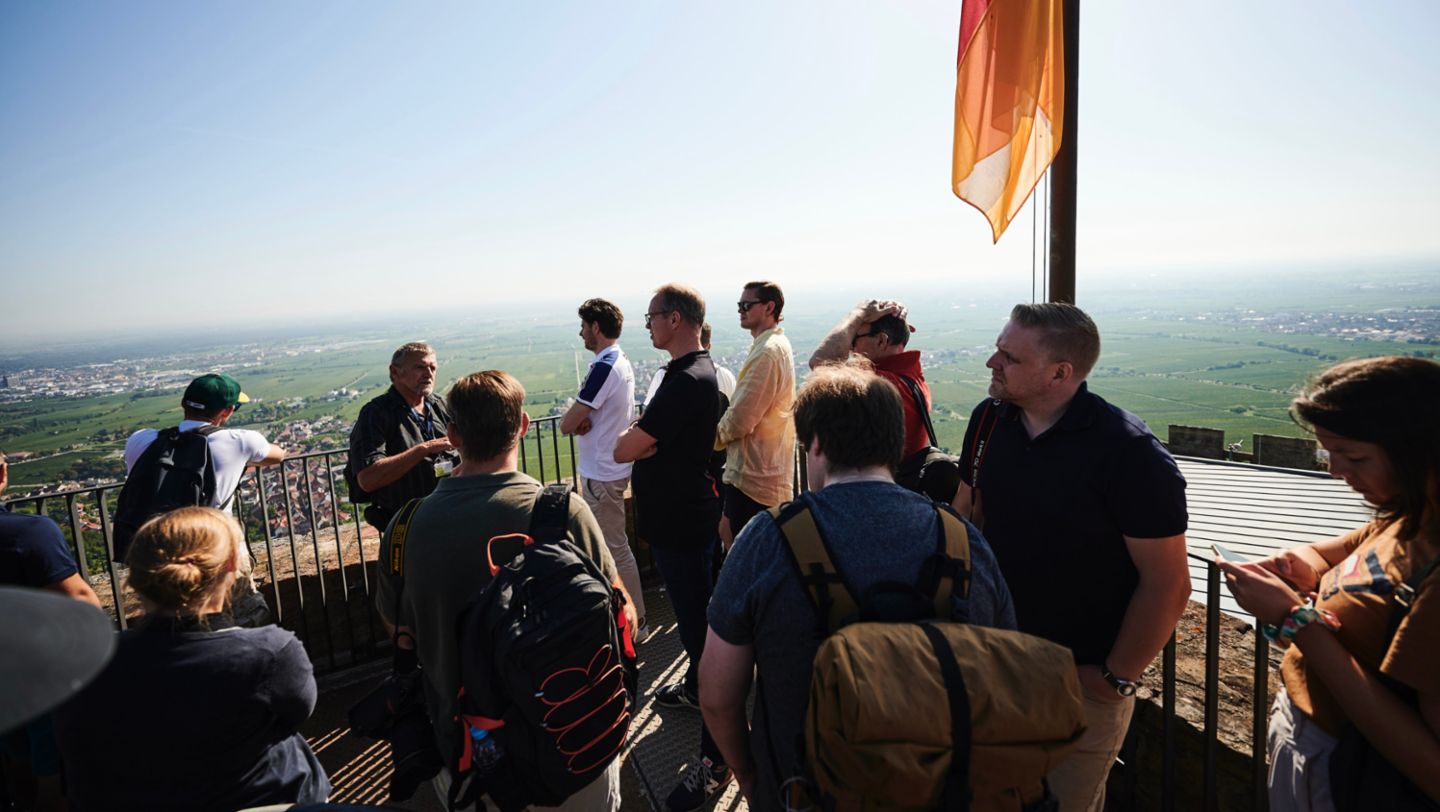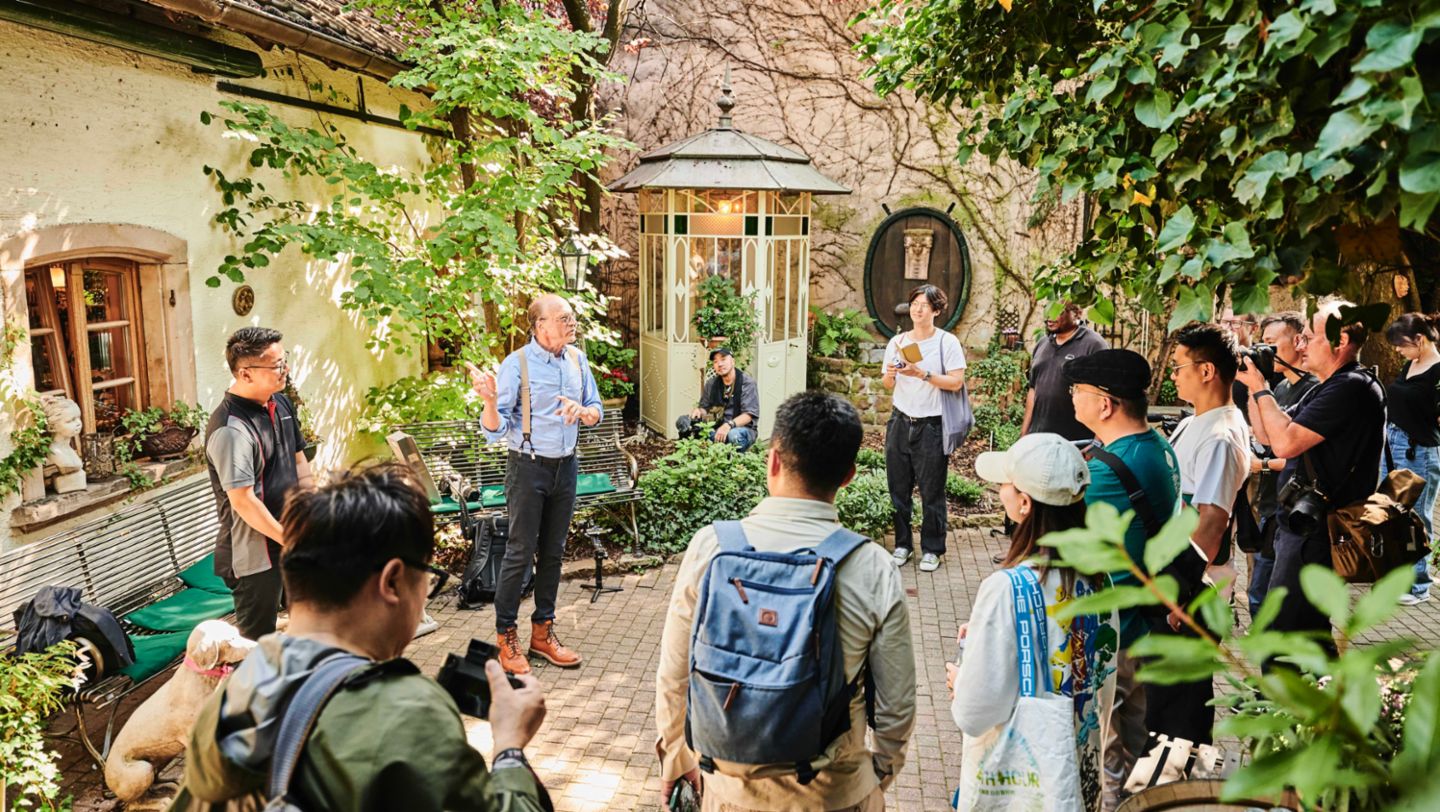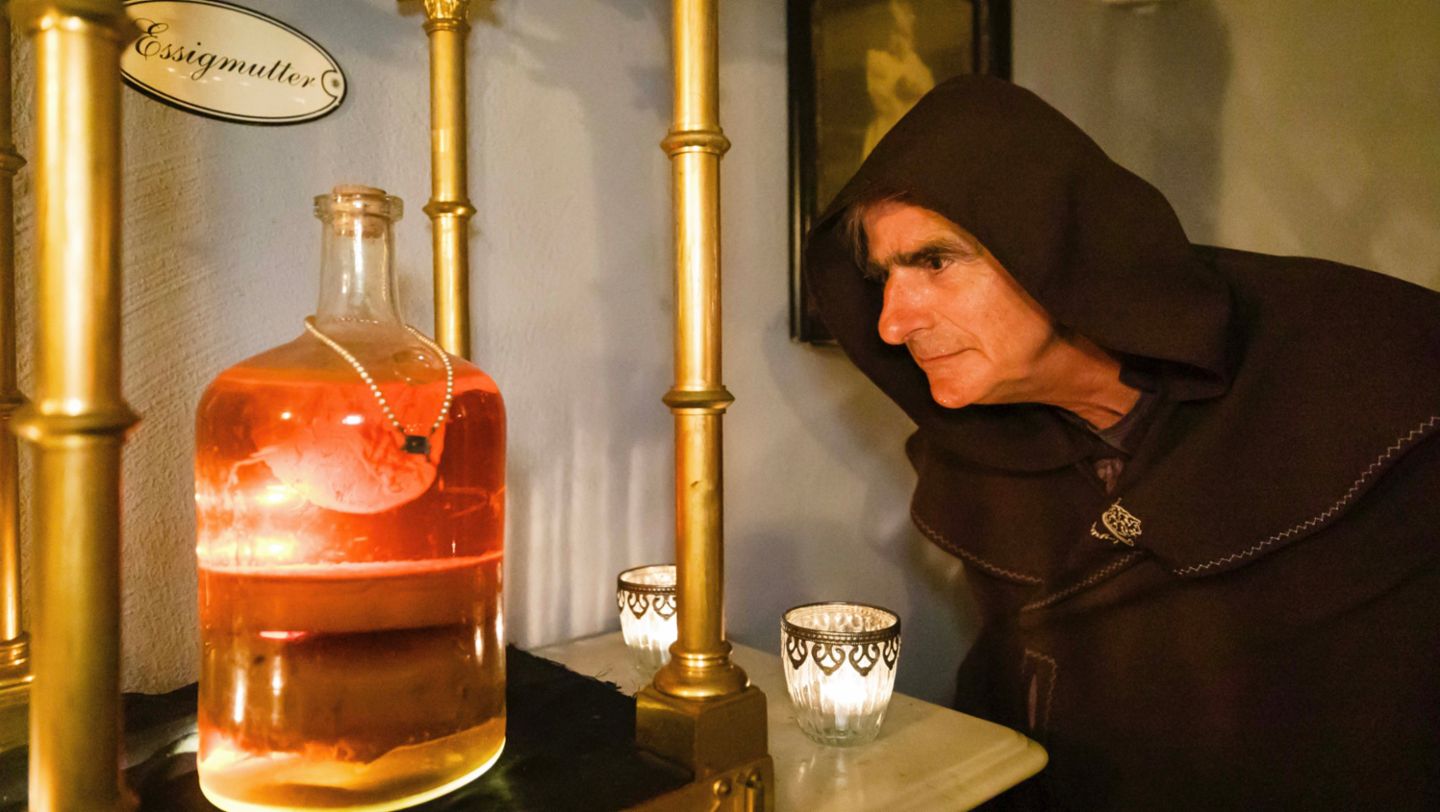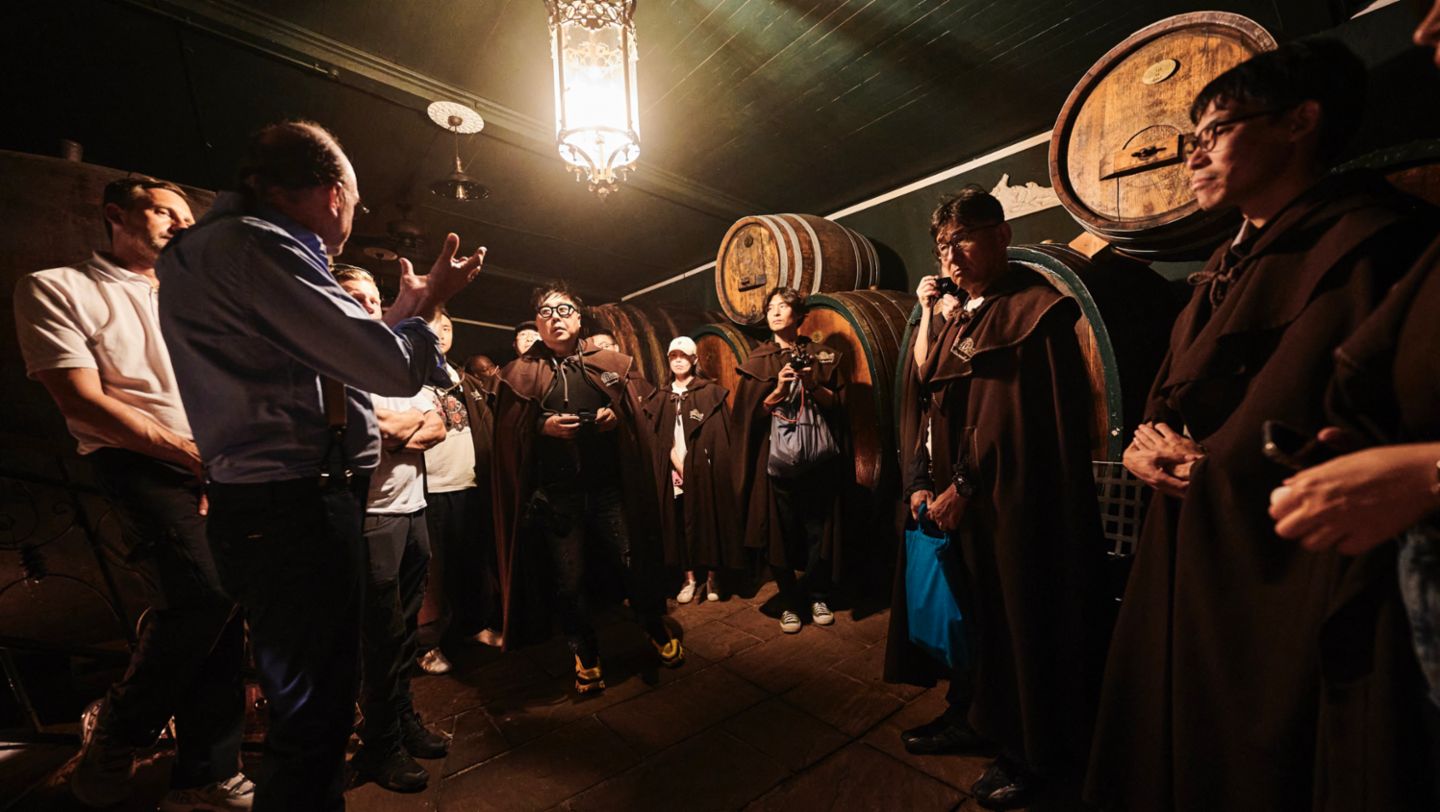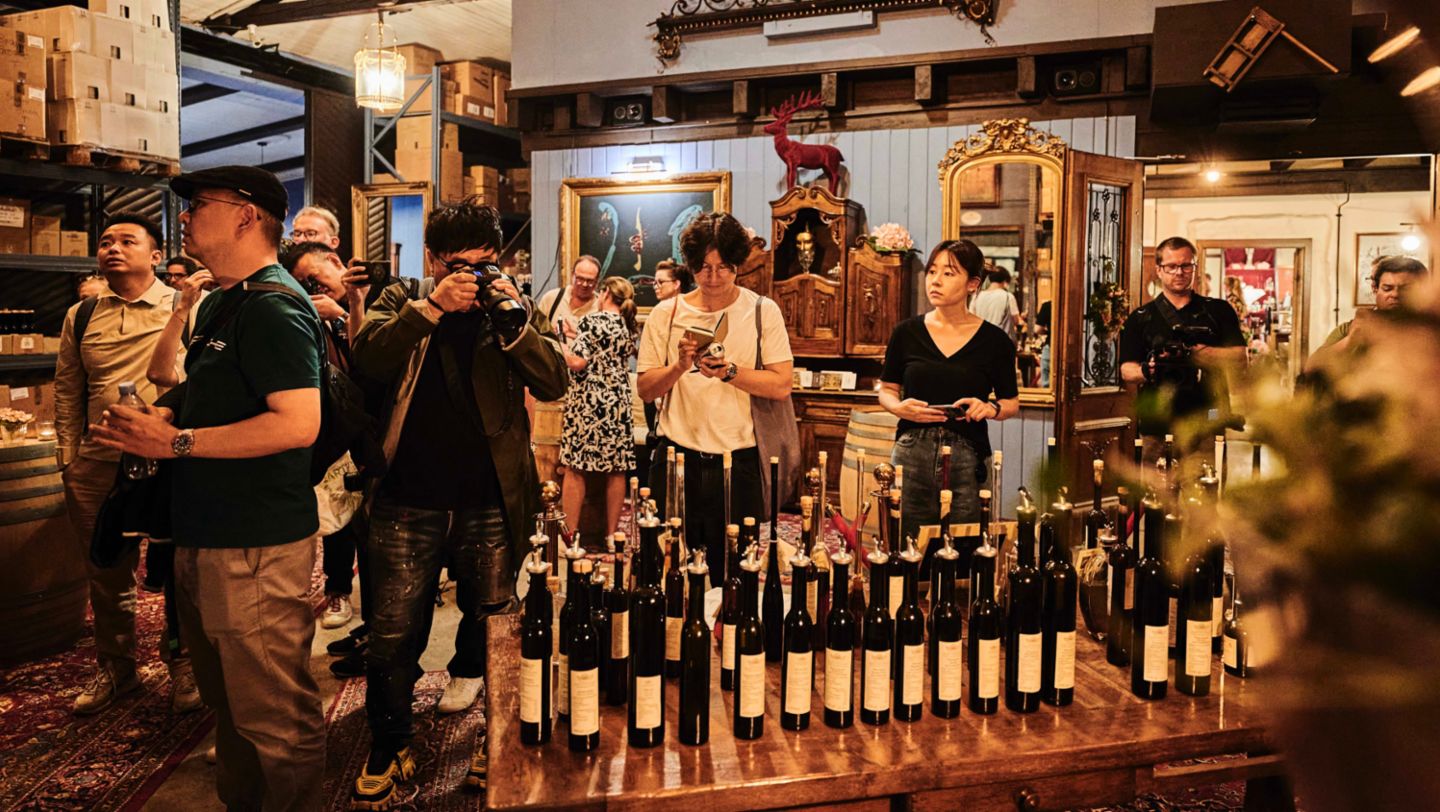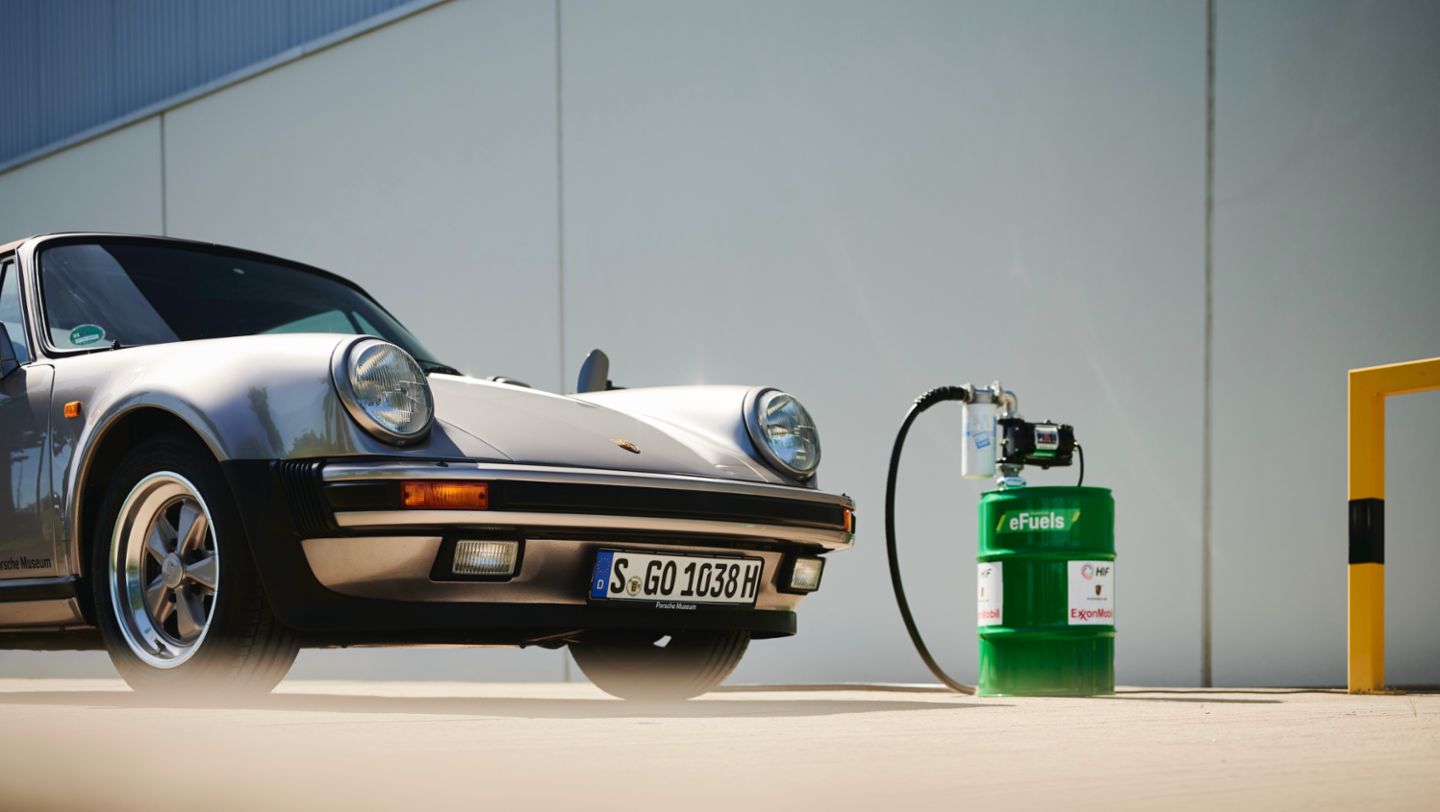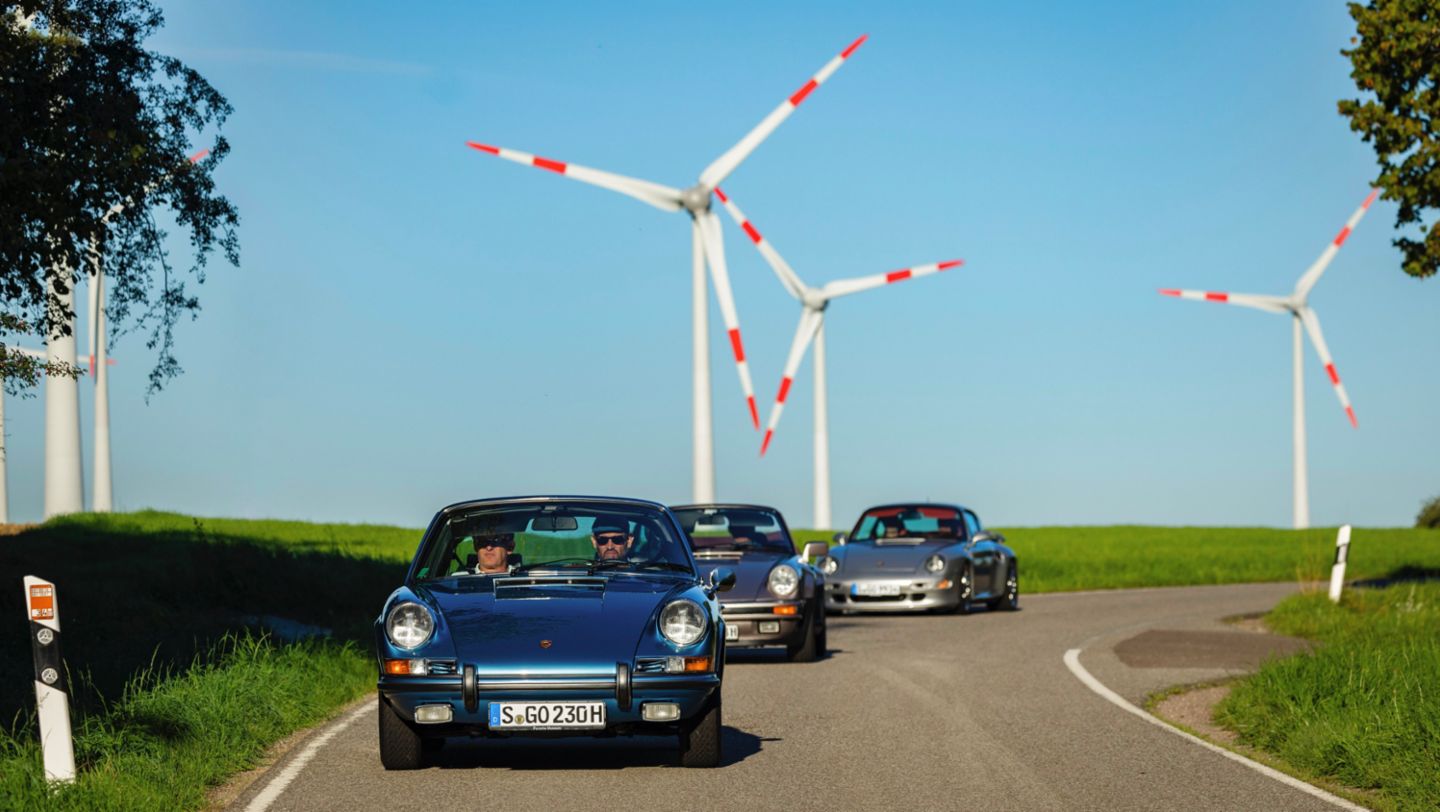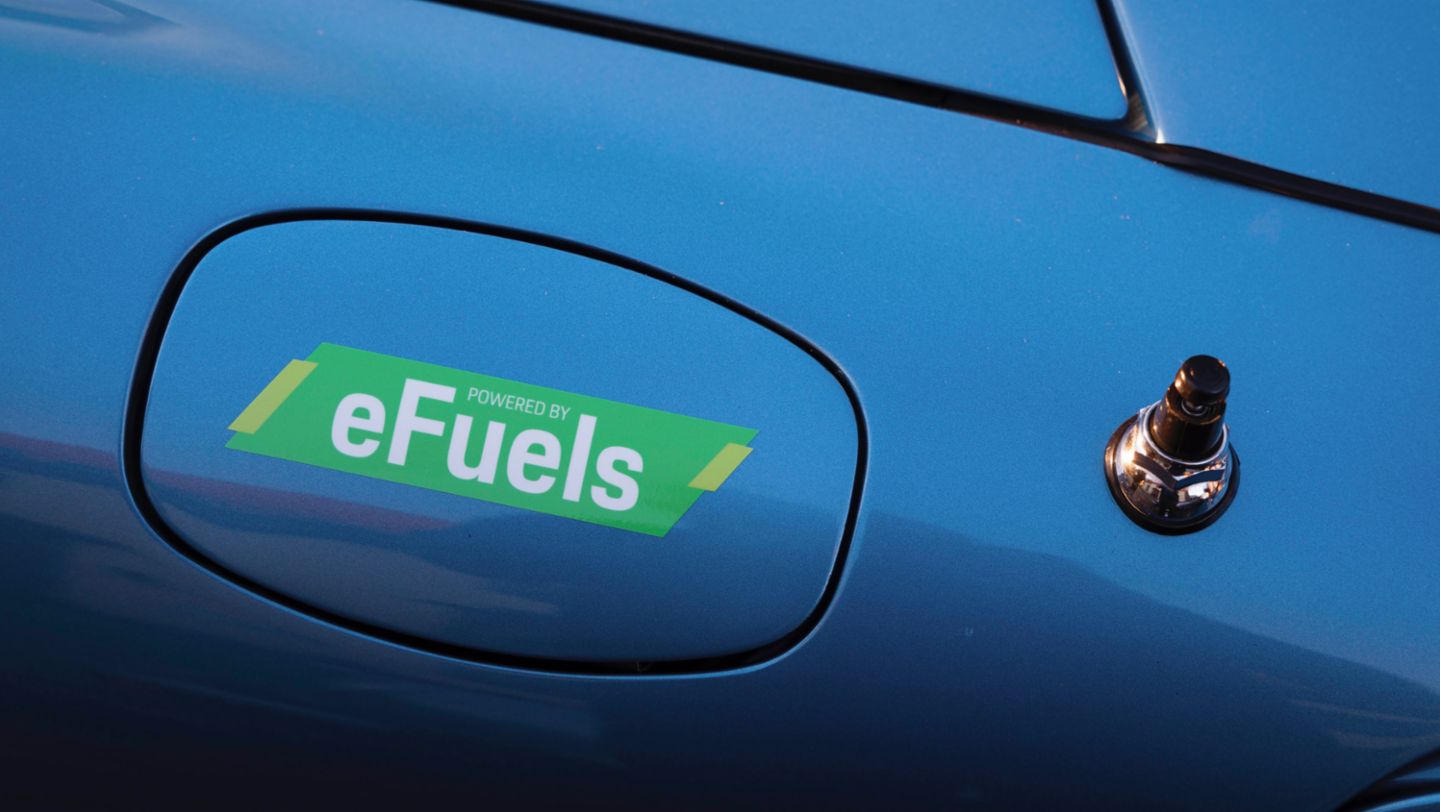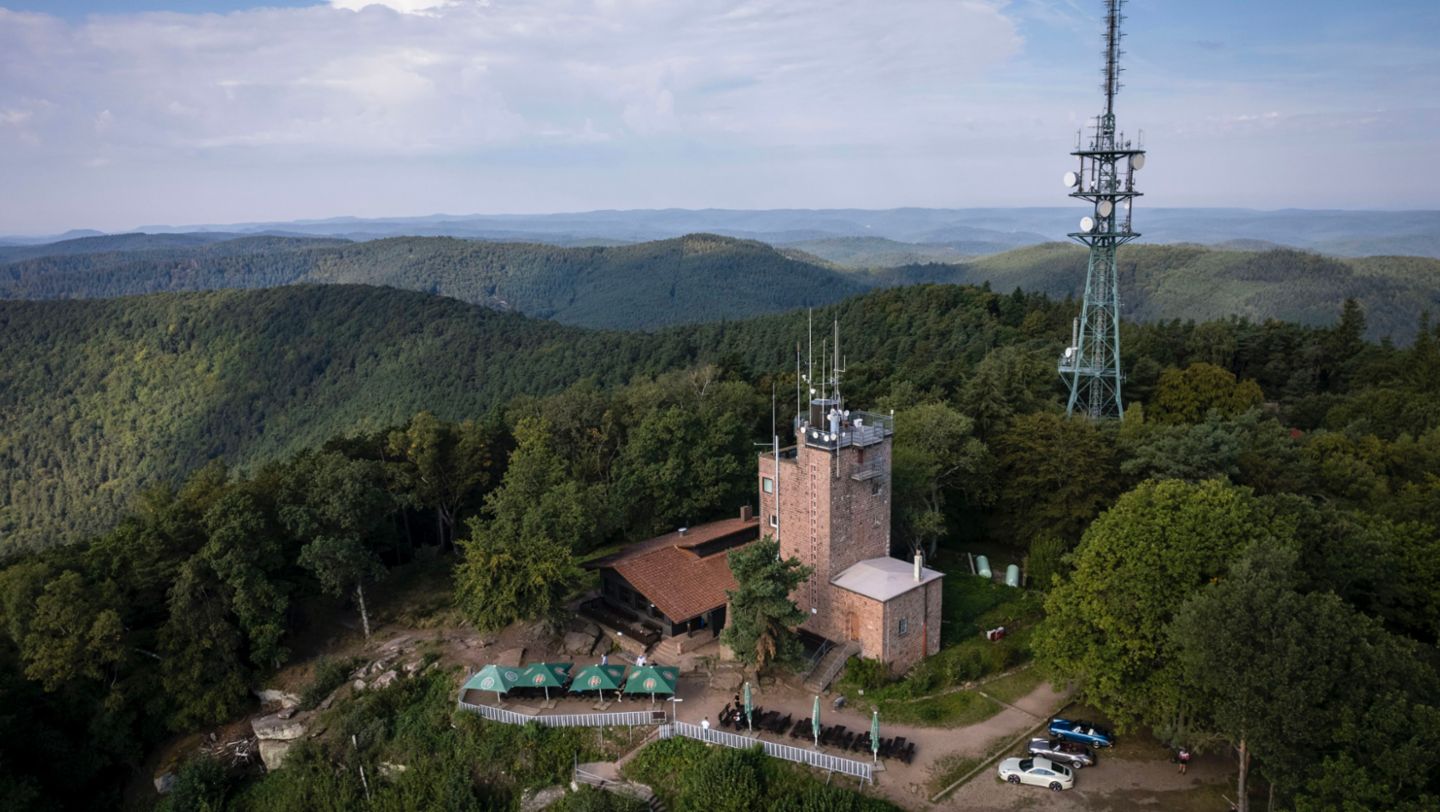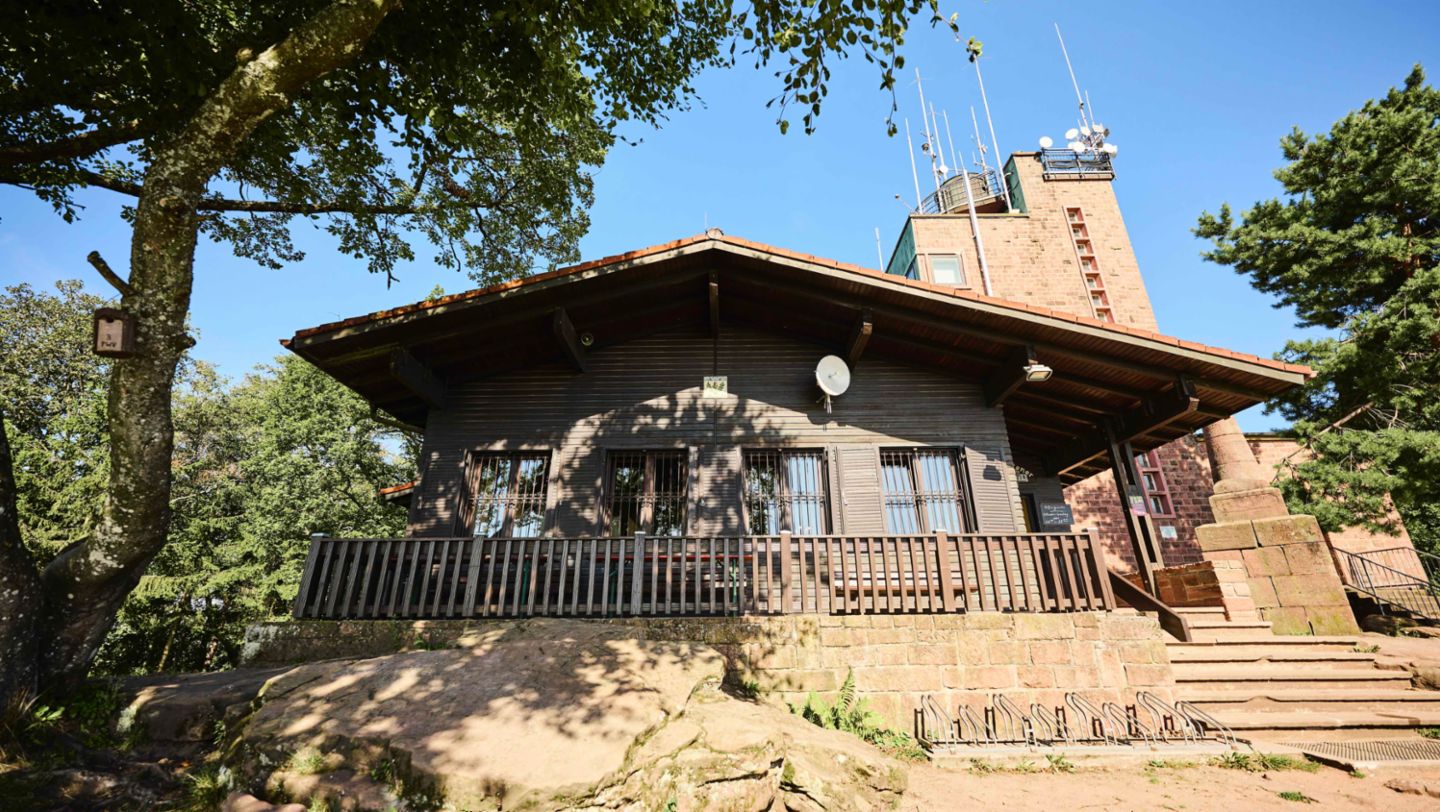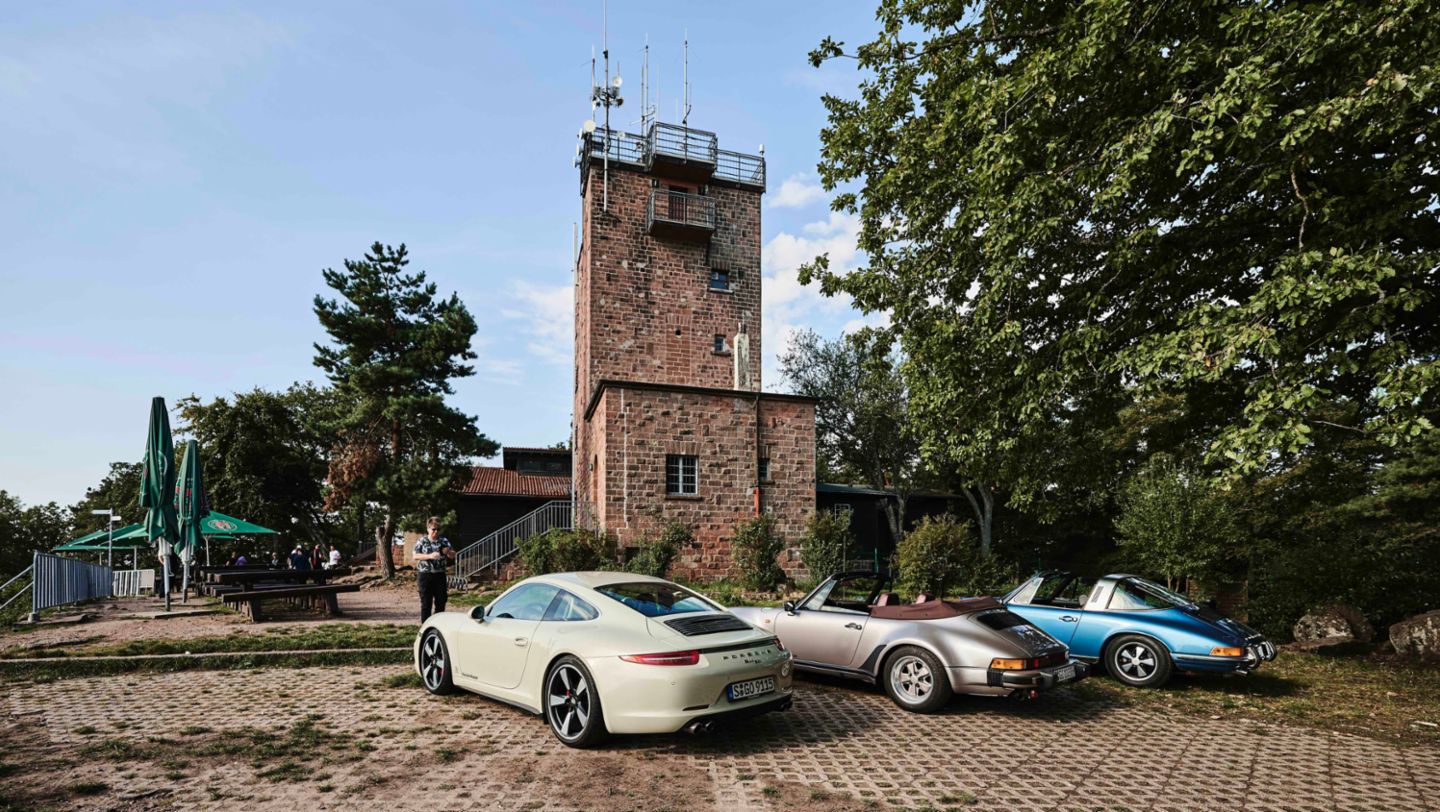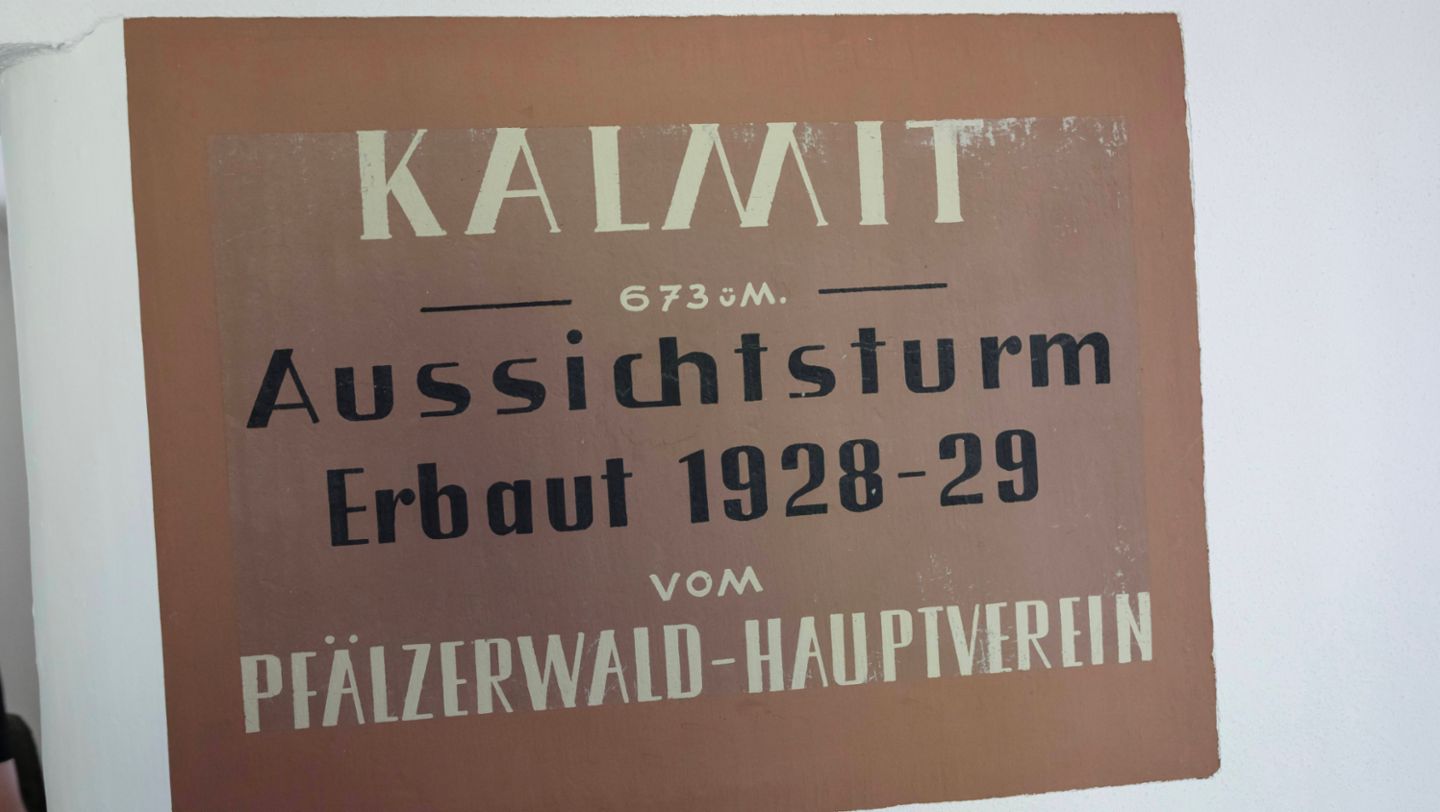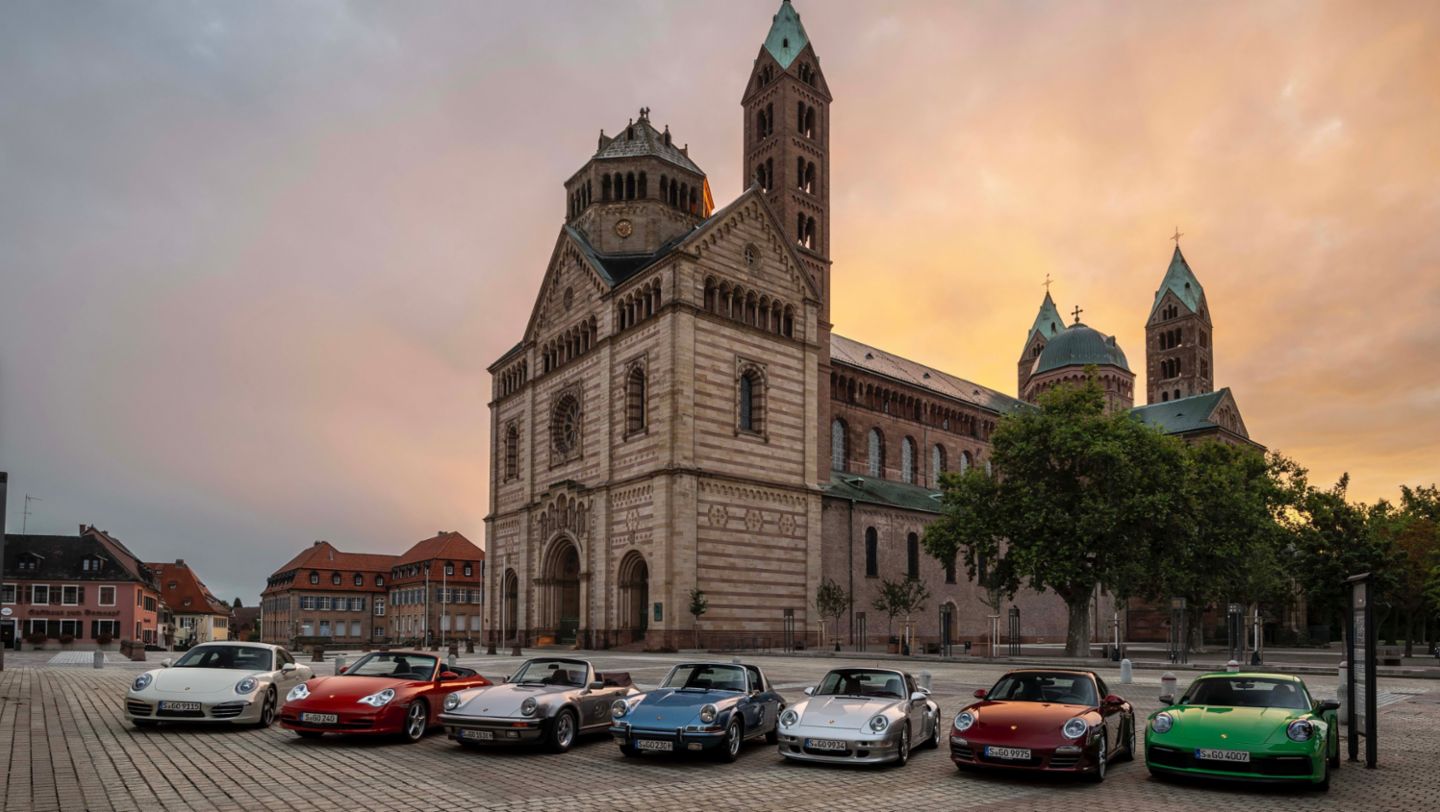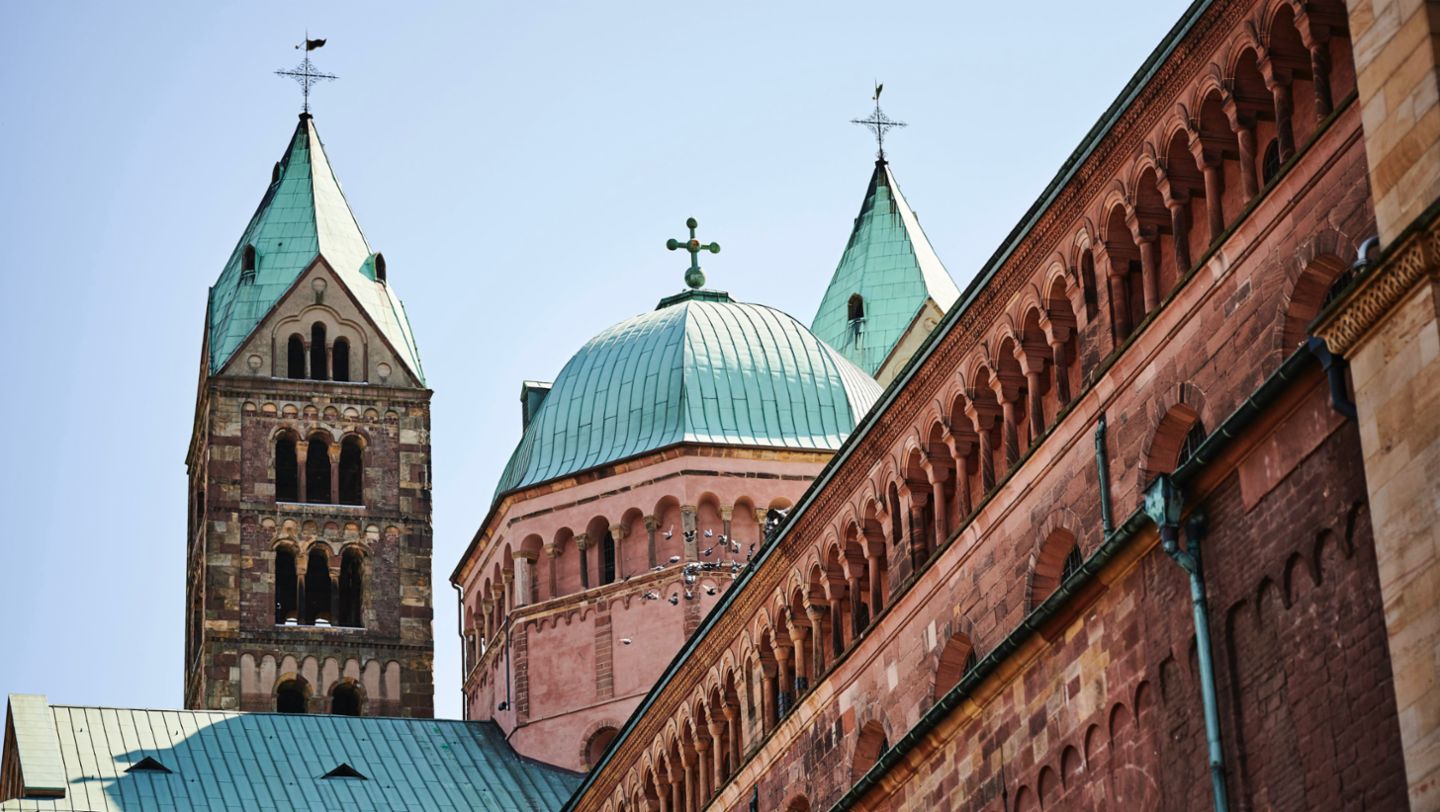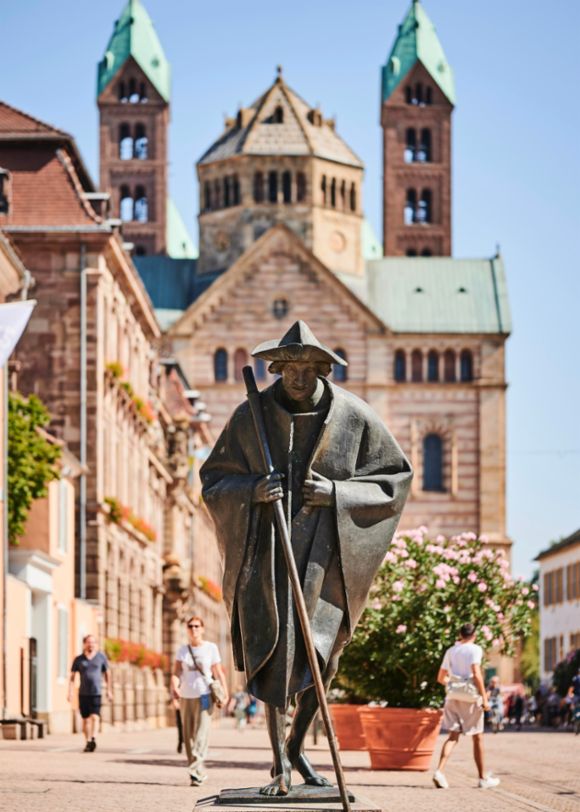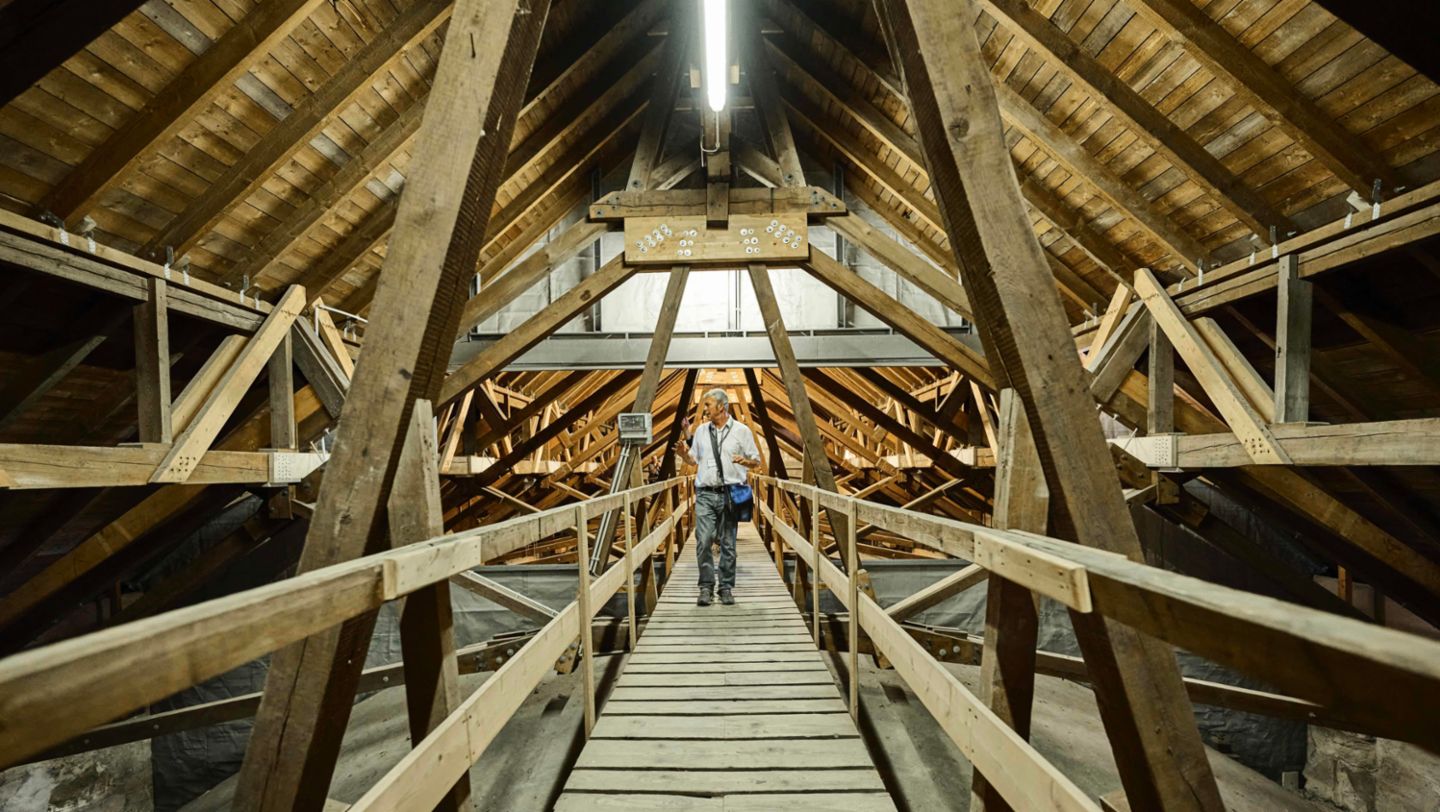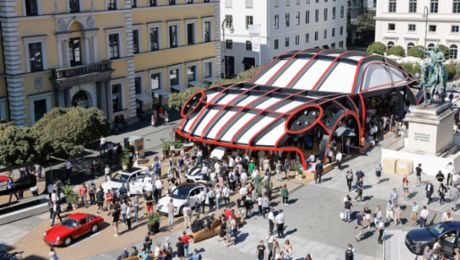The view from Hambach Castle is an impressive one. On the Upper Rhine Plain, a few traces still remain of what were once 500 fortresses in this part of the country, though vineyards now dominate the landscape. Almost two thirds of Germany’s wine is produced here, and the Palatinate Forest in the south is the country’s biggest contiguous forest area. The building itself, a fortress dating from the Middle Ages that was built up into a castle in the modern era, has, alongside the Paulskirche in Frankfurt, stood for the foundation of German democracy and freedom of the press since the Hambach Festival of 1832.
Hambach Castle is one of the many highlights of this year’s Porsche Heritage Experience cultural format organised by the Porsche Heritage and Museum department. “It has always been our mission to enrich the future with important insights from the past. We created the Porsche Heritage Experience to enable our heritage and traditions to be experienced at first hand,” explains Achim Stejskal, Head of Porsche Heritage and Museum. “Following the previous destinations of China and Hawaii, wanting to invite visitors to our own country in the ‘75 Years of Porsche Sports Cars’ anniversary year seemed self-evident for us.”
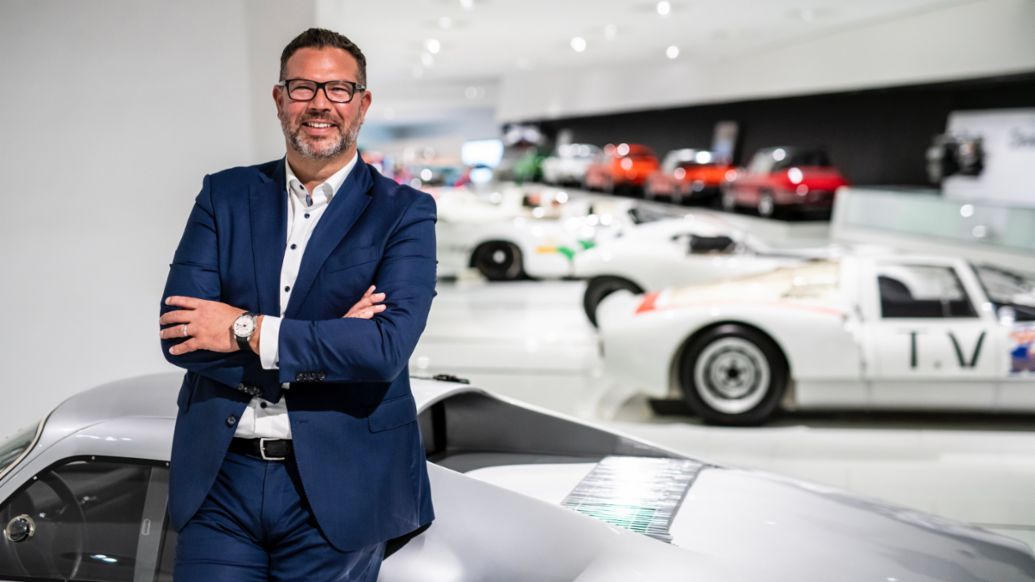
Its participants have come from China, the US, Sweden – from all over the world. Their journey’s destination is Rhineland-Palatinate, a stronghold of culture, identity and tradition. Seven UNESCO World Heritage Sites can be found here. To mark ‘60 Years of the 911’, the Porsche Museum is sending seven 911 cars from different years through Rhineland-Palatinate as cultural ambassadors, accompanying 40 media representatives.
Starting at the abbey
The starting point for the tours through the Palatinate is the former Hornbach Abbey close to the French border. The monastery was founded by Pirminius in 742. Its church was formerly surrounded by the buildings necessary for the monastic life of the Benedictine order. In 1677, during the Franco-Dutch War, parts of the town and the monastery were burnt down. The abbey fell asunder. Restoration work began a few years ago, with the building being converted into a hotel. Guests can now relax in the cloister, the chapel, the school or the coach house, and bask in all the history.
Here, Alexander E. Klein, head of the car collection and the Heritage Experience, explains why Porsche created this cultural experience format: “We don’t centre everything around our cars, and instead around the creativity of people. The focus is on communicating about heritage-conservation work – eye to eye. Participants in the Porsche Heritage Experience encounter people who have passed on their knowledge, and the traditions they have learnt and lived, from generation to generation. We want to literally ‘experience’ culture, identity and tradition.”
Of course, to enable heritage and tradition to be experienced, Porsche must maintain a cultural heritage that is worthy of preservation. “It’s a particular responsibility for us to ensure that knowledge is passed on to the next generation. Every day, we work to keep the cars in our collection ready to drive so they can be experienced in action by as many people as possible at live events. To tell the story of the company, they travel all over the world as brand ambassadors and objects of reference,” says Kuno Werner, Workshop Manager at the Porsche Museum. He gives the group of international journalists insights into the Porsche restoration philosophy, various aspects of the restoration methodology, and the full spectrum of activities in the museum workshop.
All about vinegar
Generally speaking, where there are a lot of rivers there’s a lot of culture too. Rivers distribute culture, are transportation routes for goods, and inspire aesthetically inclined individuals. Rhineland-Palatinate even bears the name of Germany’s most important river, the Rhine, which is one of the main transportation routes in Europe. When you add the Moselle, the Saar and the Lahn, the state is traversed by four of Germany’s major waterways. This alone was sufficient reason for Porsche to get to know the region, along with its customs and crafts. For example, by paying a visit to Georg Wiedemann. His Weinessiggut Doktorenhof is an old family business and the smallest vinegar producer in Germany.
At his factory, vinegar bacteria hundreds of years old are used to make digestive vinegars, for example, many based on old recipes – but with some new creations as well. These innovations have names such as ‘Lemon Bride’, ‘Wedding Balsam’ or ‘Luxxxuriosus’, and they taste of southern fruits, flower blossoms or oak casks. And they all taste even better after wandering through the cellar, dressed in a robe and holding a candle, past the illuminated maturing casks, all the while accompanied by mystical church music. “Here, too, we discuss the methods and scientific approaches to maintaining traditions, and compare them with the traditions practised at Porsche. The goal is always to broaden our own horizons in order to learn from the best in their field,” explains Klein.
Afterwards, we return to the wondrous, narrow, winding country roads of the Palatinate. Of course, the route is also tailored to a plan, for the most part following the Palatine Ways of St. James. The cultural experience is rounded off by the fact that the participants travel from one cultural site to another in historical sports cars. Seven Porsche 911 cars are at the ready to drive from station to station while enjoying the landscape from the cockpit, starting with the 911 S 2.2 Targa from 1970 and a 911 (G-Model) Carrera Cabriolet with a Turbo-look from 1983. Joining them are a 911 Turbo S of generation 933 from 1993, a 911 (Type 996) Carrera 4 as a Cabriolet from 2001, a 911 (Type 997) as a Targa 4S from 2007, a ten-year-old 911 Carrera S special model ‘50 Jahre 911’, and a new 911 Carrera T of the current generation 992.
Driven by renewable electrical energies
For the first time in an event of this kind, all cars are fuelled with synthetic fuel – known as eFuels – for the entire 600-kilometre tour. This isn’t a problem for the boxer engines in the 911 cars, no matter what year they were built. “We just have to make sure that the eFuels conform to current fuel standards. Then we can use them to fuel all the existing cars, transforming them from a problem into part of the solution for reducing CO2,” says Karl Dums, a specialist at Porsche for these types of fuels made of CO2 and hydrogen. The fuels are sourced from a pilot plant in Chile built with the participation of Porsche, where they are produced using previously untapped renewable energy. A degree of post-processing is needed, however, before the fuels comply with fuel standards, as the required admixture components are currently only available on a fossil fuel basis. “Nonetheless, the carbon footprint for production on an industrial scale is still far better than the one for a fossil fuel,” as Dums points out, “and we are working on a solution to this problem as well.”
Traditional cuisine and an observation deck
While the cars are consuming the fuel of the future, the Experience participants fortify themselves with dishes traditional to Palatinate cuisine. Revitalised, the convoy ascends to the next cultural peak: the Kalmithaus. This is an inn on the second-highest mountain in the Palatinate Forest, which rises to 673 metres. It is one of more than 100 managed hikers’ hostels, inns and huts that make up the Palatinate Forest hut culture, one of Germany’s intangible cultural assets recognised by the German UNESCO commission. The Palatinate Forest hut culture is maintained by the Pfaelzerwald-Verein founded in 1902, which today has 23,000 members and continues looking after these hiking destinations. Next to the hut is a weather station open to visitors. Its observation deck is 690 metres above sea level, making it the highest point in the Palatinate. Its highest mountain, the Donnersberg, is just three metres shorter after all.
Milestone in the history of Romanesque architecture
The next stop on the tour is Speyer. Our destination is the magnificent cathedral, the largest intact Romanesque church in the world, in one of Germany’s oldest cities, which has been a bishop’s see since the 5th century. Almost 1,000 years old, the imperial cathedral is on the list of UNESCO World Heritage sites. Not only its scale is impressive, but also its many colourful frescoes, four emperor’s and four king’s graves in the crypt, its accessible roof construction, and the view of the city offered by the 60-metre-high platform in the southwest tower, at the top of the 304 steps leading up there.
The Porsche Heritage Experience thus ends for its participants as it began: with an unforgettable view. And in the knowledge that the Palatinate is a region that is open to the world, and that maintains its long traditions. At the end of the 600-kilometre tour, Porsche has therefore shown the participants that heritage and tradition can be experienced in the truest sense of the word. To tell the story of the company along the way, Porsche Heritage and Museum is sending its cars out as cultural ambassadors. “Cultural assets are usually irreplaceable, and their variety and character must be protected and preserved. Porsche Heritage and Museum doesn’t just preserve the brand tradition, it also translates it and transports it into the future,” as Achim Stejskal concludes.
